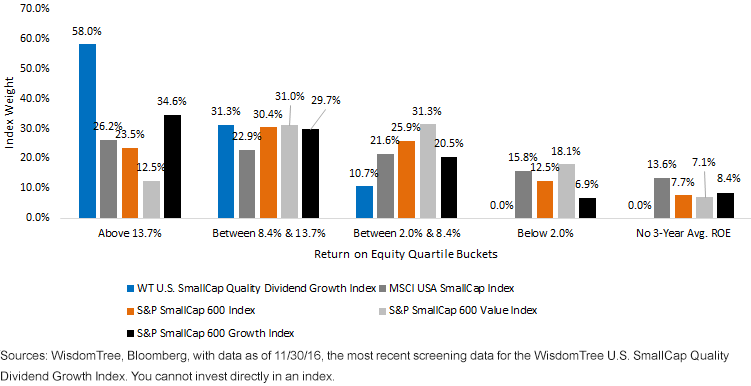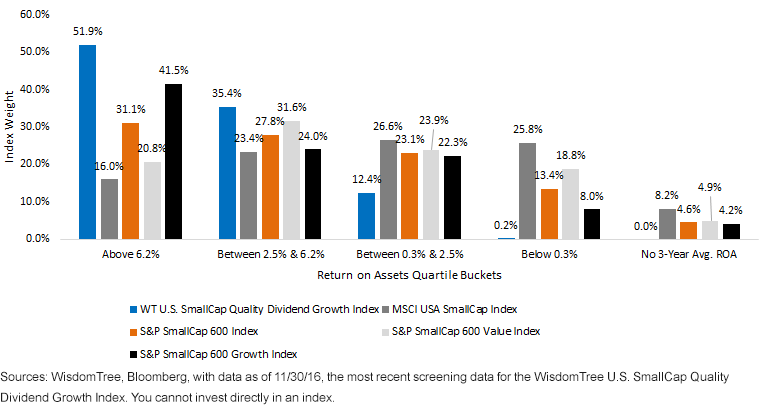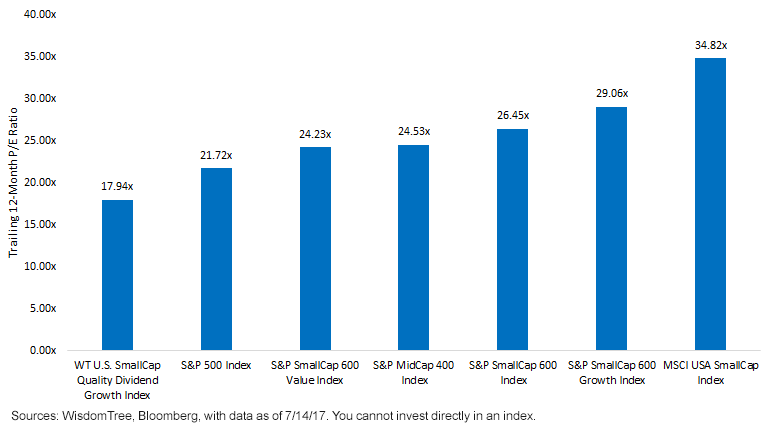Solving Today's Biggest Issue With U.S. Small Caps
Let’s be honest—we live in a world that is dominated by home bias. Almost 100% of clients that we have spoken to over the past few years agree that the U.S. market is approaching the upper end of the valuation spectrum. There can be debates over whether the fundamentals support the valuations and discussions about whether the U.S. is that much less risky than all other global markets, but the fact is that very few, if any, clients have been telling us that the U.S. represents a valuation opportunity.
Small Caps—Even More Expensive
We can use the S&P U.S. indexes to illustrate this point:
- The S&P 500 Index had a trailing 12-month price/earnings (P/E) ratio of 21.7x.
- The S&P MidCap 400 Index had a trailing 12-month P/E ratio of 24.5x.
- The S&P SmallCap 600 Index had a trailing 12-month P/E ratio of 26.4x.
As one dips down the market capitalization spectrum, the P/E ratios seen today tend to rise. One reason for this is that as one dips down the market capitalization spectrum, the percentage weight in speculative companies that may have had negative earnings over the prior 12 months also rises, pushing up the P/E ratio.
Quality in U.S. Small Caps—A Distinct Opportunity
We think this creates a unique opportunity: small-cap strategies that are focused on quality. Many assume that there are two ways to go about U.S. small caps: 1) Own them all, typically with a market capitalization-weighted index, or 2) use an active manager to screen out the less-than-desirable companies.
This is where WisdomTree entered the picture in 2013 with its quality dividend growth methodology.
WisdomTree’s Quality Focus
Quality is one of those investment terms that can mean many different things depending on who is saying it. At WisdomTree, we focus on three-year average return on equity (ROE) and three-year average return on assets (ROA). By breaking the very broad MSCI USA Small Cap Index into quartiles based on these metrics, we can see what this means in terms of a holistic quality exposure.
The WisdomTree U.S. SmallCap Quality Dividend Growth Index: Nearly 60% in Firms with ROE above 13.7%

The WidomTree U.S. SmallCap Quality Dividend Growth Index: More than Half of Exposure to Firms with ROA above 6.2%

- It’s important to note how WisdomTree combines average three-year ROE and ROA for its quality focus. This leads to firms utilizing high leverage to achieve high returns on equity to not actually qualify for the Index. None of the other indexes shown has such a focus on quality, and while they may include more companies, the WisdomTree U.S. SmallCap Quality Dividend Growth Index is straddling between what a passive, beta index and a small-cap active manager could deliver.
But Quality at What Price?
OK, so usually if someone is getting more of something desirable, it costs more. Think of typical, traditional active managers. For the perception of expertise, there tends to be a greater cost than what is associated with a passive index-tracking strategy. It’s the same with quality—if higher quality is thought to be better than lower quality, the stocks should typically, in some fashion, cost more. Let’s check the trailing 12-month P/E ratios.
Highest Quality and Lowest P/E Ratio

- We saw how WisdomTree’s approach tilts weight to higher-quality stocks—both from a perspective of ROE and ROA. That was achieved with a trailing 12-month P/E ratio below that of the S&P 500 Index.
Ongoing Focus on Quality and Valuation
Another thing that people tend to like about small-cap active managers is that there is ongoing monitoring of the positions. If market conditions change, there can be a response. Market capitalization-weighted indexes focus on one thing: market capitalization.
WisdomTree is different in that it incorporates a systematic, disciplined rebalancing process. This refreshes both the quality attributes and the valuation attributes. As market conditions change, the rebalance brings the focus back to the fundamentals. We have seen in WisdomTree’s strategies that have been around for more than 10 years that this has been very tough to beat within U.S. markets.
Source for all bullets: Bloomberg, with data as of 7/14/17.
Disclaimer: Investors should carefully consider the investment objectives, risks, charges and expenses of the Funds before investing. U.S. investors only: To obtain a prospectus containing this ...
more


